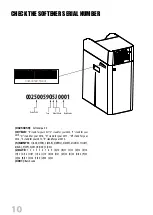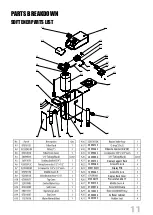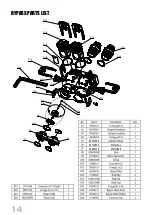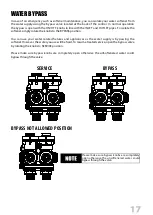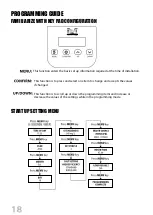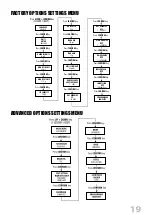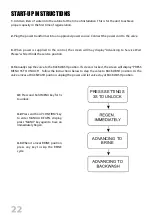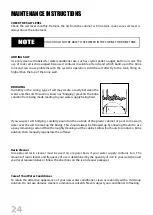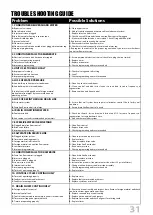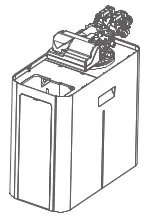
YOU SHOULD NOT BE ABLE TO SEE WATER IN THE CABINET OR BRINE TANK.
Figure 5
BRIDGING
Humidity or the wrong type of salt may create a cavity between the
water and the salt. This action, known as “bridging”, prevents the brine
solution from being made, leading to your water supply being hard.
Resin Cleaner
An approved resin cleaner must be used on a regular basis if your water supply contains iron. The
amount of resin cleaner and frequency of use is determined by the quantity of iron in your water(consult
your local representative or follow the directions on the resin cleaner package).
Care of Your Water Conditioner
To retain the attractive appearance of your new water conditioner, clean occasionally with a mild soap
solution. Do not use abrasive cleaners, ammonia or solvents. Never subject your conditioner to freezing.
If you suspect salt bridging, carefully pound on the outside of the plastic cabinet or pour some warm
water over the salt to break up the bridge. This should always be followed up by allowing the unit to use
up any remaining salt and then thoroughly cleaning out the cabinet. Allow four hours to produce a brine
solution, then manually regenerate the softener.
ADDING SALT
Use only clean salt labeled for water conditioner use, such as crystal, pellet, nugget, button or solar. The
use of rock salt is discouraged because it contains insoluble silt and sand which build up in the brine
tank and can cause problems with the system’s operation. Add the salt directly to the tank, filling no
higher than the top of the brine well.
MAINTENANCE INSTRUCTIONS
CHECK THE SALT LEVEL
Check the salt level monthly. Remove the lid from the cabinet or brine tank, make sure salt level is
always above the brine level.

